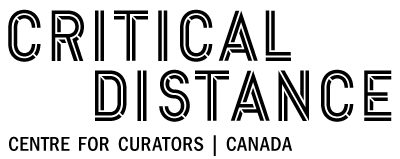EVENT: Drain | A Journal of Contemporary Art and Culture
Critical Distance was pleased to host the launch event for AIDS and Memory, Issue 13.2 of Drain: A Journal of Contemporary Art and Culture, edited by CDCC advisory board member, Ricky Varghese. Complementing the magazine’s September 1 online launch, this event included a premiere of Vincent Chevalier’s film À Vancouver and a panel discussion with Chevalier, Varghese, and issue contributors Michele Pearson Clarke, Liz Gibson-DeGroote, Francisco-Fernando Granados, Theodore Kerr, and Cait McKinney.
About the issue:
In AIDS and Memory, Issue 13.2 of Drain: A Journal of Contemporary Art and Culture, edited by CDCC advisory board member, Ricky Varghese, Vincent Chevalier is the Feature Artist; his short film À Vancouver explores the themes of memory, trauma, sexual history, non-belonging and forms of inheritance. This issue also includes critical essays by Alexandra Juhasz, Oliver Penny, Kate Bride (with a prologue by Amber Dean), Katrin Köppert and Todd Sekuler, Jaime Shearn Coan, Ryan Conrad and Franscisco-Fernando Granados, each taking up discursively diverse approaches to thinking the themes of commemoration, historicity and aesthetic practice as they relate to HIV/AIDS. The Thought Experiments section, for more experimental critical works, includes evocative pieces by Ralph Carl Wushke, Amy Kazymerchyk, Theodore (Ted) Kerr, Cait McKinney and Stephanie Youngblood.
We are also pleased to feature 2016, 1996, a web gallery curated by John Paul Ricco, as a collaborative effort between Drain and Visual AIDS.
The issue includes a number of interviews: Kris Cohen and Abigail Susik interview Douglas Crimp about Crimp’s upcoming book Before Pictures, which details gay life in New York in the 1970s. Christopher Smith interviews AJAMU about the latter’s curatorial work for Visual AIDS 2016. Michèle Pearson Clarke speaks with Liz Gibson-DeGroote about Gibson-DeGroote’s film A Ghost in Our House. And lastly, Jordan Arseneault and Jon Henry discuss the complexities of social practice between artists.
The history, memory and lived experience of AIDS have changed over the course of the last three decades, as have the aesthetic practices and critical and cultural meanings tied to AIDS. This issue of Drain invited theorists, artists, critics, writers and commentators to consider the ways in which the representation of AIDS has evolved and continues to evolve in the realm of aesthetic and artistic practice. In this issue, they think through what it means to remember and consider the persistence and insistence of memory and commemoration as necessarily built-in facets of the attempted representation of AIDS.
above text sourced and edited from the Drain media release
